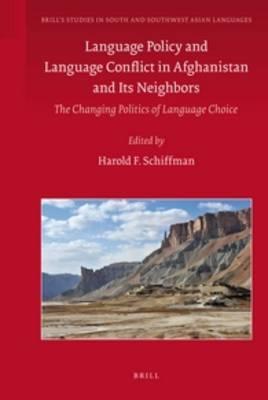Full Product Details
Author: Harold Schiffman
Publisher: Brill
Imprint: Brill
Volume: 2
Dimensions:
Width: 16.00cm
, Height: 2.50cm
, Length: 24.00cm
Weight: 0.813kg
ISBN: 9789004201453
ISBN 10: 9004201459
Pages: 372
Publication Date: 09 December 2011
Audience:
General/trade
,
General
Format: Hardback
Publisher's Status: Active
Availability: Awaiting stock

The supplier is currently out of stock of this item. It will be ordered for you and placed on backorder. Once it does come back in stock, we will ship it out for you.
Reviews
In the final chapter, Harold F. Schiffman returns to the volume's goal, to construct an updated picture of languages and language policy in the region, and give potential language learners a clearer picture of what kinds of resources exist, and what is still needed. This goal was certainly attained; the essays do just that, and are brought together adroitly, given the wide range of countries, languages, and policy decisions covered. All of the essays are well written, and show a detailed analysis of the state of multilingualism in their respective countries. As such, the volume can serve as a good springboard for current researchers seeking to draw comparisons between different countries and time periods, for those seeking avenues of research for particular languages or language interactions, as well as for students of language policy interested in Central Asia and the ramifications of cultural, ethnic, and political flux on language use. Richard Littauer, Saarland University Linguist List: September 2012.
""In the final chapter, Harold F. Schiffman returns to the volume's goal, ''to construct an updated picture of languages and language policy in the region, and give potential language learners a clearer picture of what kinds of resources exist, and what is still needed.'' This goal was certainly attained; the essays do just that, and are brought together adroitly, given the wide range of countries, languages, and policy decisions covered. All of the essays are well written, and show a detailed analysis of the state of multilingualism in their respective countries. As such, the volume can serve as a good springboard for current researchers seeking to draw comparisons between different countries and time periods, for those seeking avenues of research for particular languages or language interactions, as well as for students of language policy interested in Central Asia and the ramifications of cultural, ethnic, and political flux on language use."" Richard Littauer, Saarland University Linguist List: September 2012.
Author Information
Harold F. Schiffman's research interests focus on the linguistics of the Dravidian languages, especially Tamil and, to a lesser extent, Kannada, and on the area of language policy. He has published extensively in these two areas where overlapping interests in sociolinguistics (diglossia, language standardization, multilingualism) intersect with language policy and the politics of language. He is also director of the Consortium for Language Policy and Planning.




